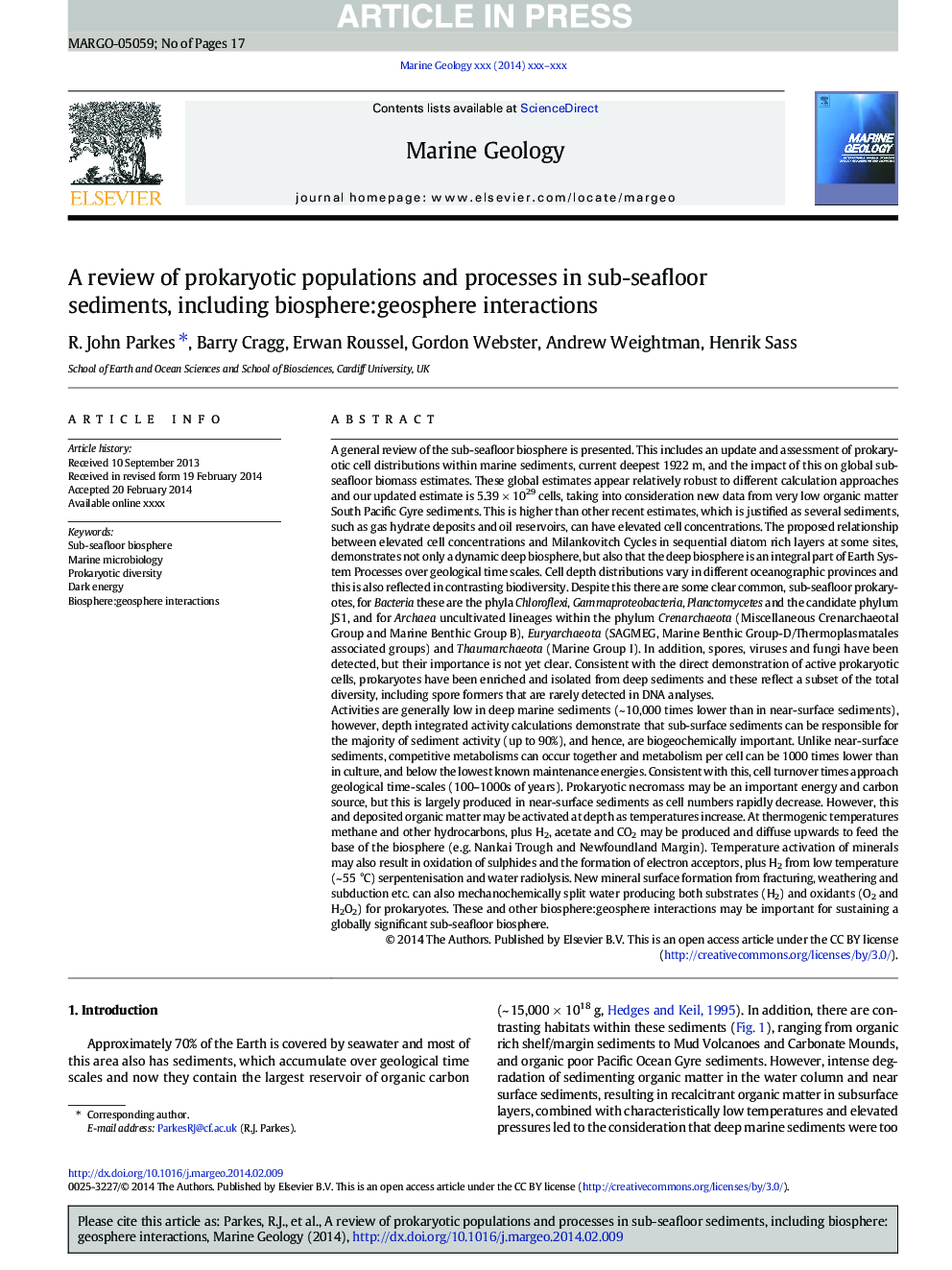| Article ID | Journal | Published Year | Pages | File Type |
|---|---|---|---|---|
| 6441680 | Marine Geology | 2014 | 17 Pages |
Abstract
Activities are generally low in deep marine sediments (~ 10,000 times lower than in near-surface sediments), however, depth integrated activity calculations demonstrate that sub-surface sediments can be responsible for the majority of sediment activity (up to 90%), and hence, are biogeochemically important. Unlike near-surface sediments, competitive metabolisms can occur together and metabolism per cell can be 1000 times lower than in culture, and below the lowest known maintenance energies. Consistent with this, cell turnover times approach geological time-scales (100-1000s of years). Prokaryotic necromass may be an important energy and carbon source, but this is largely produced in near-surface sediments as cell numbers rapidly decrease. However, this and deposited organic matter may be activated at depth as temperatures increase. At thermogenic temperatures methane and other hydrocarbons, plus H2, acetate and CO2 may be produced and diffuse upwards to feed the base of the biosphere (e.g. Nankai Trough and Newfoundland Margin). Temperature activation of minerals may also result in oxidation of sulphides and the formation of electron acceptors, plus H2 from low temperature (~ 55 °C) serpentenisation and water radiolysis. New mineral surface formation from fracturing, weathering and subduction etc. can also mechanochemically split water producing both substrates (H2) and oxidants (O2 and H2O2) for prokaryotes. These and other biosphere:geosphere interactions may be important for sustaining a globally significant sub-seafloor biosphere.
Related Topics
Physical Sciences and Engineering
Earth and Planetary Sciences
Geochemistry and Petrology
Authors
R. John Parkes, Barry Cragg, Erwan Roussel, Gordon Webster, Andrew Weightman, Henrik Sass,
